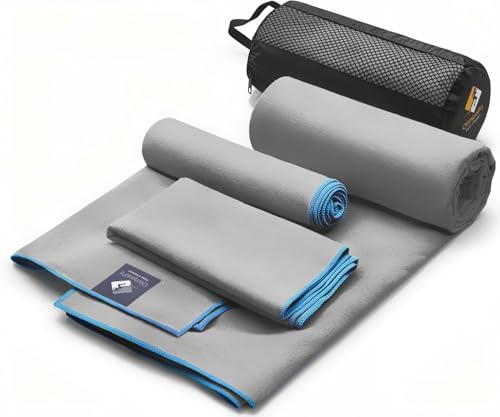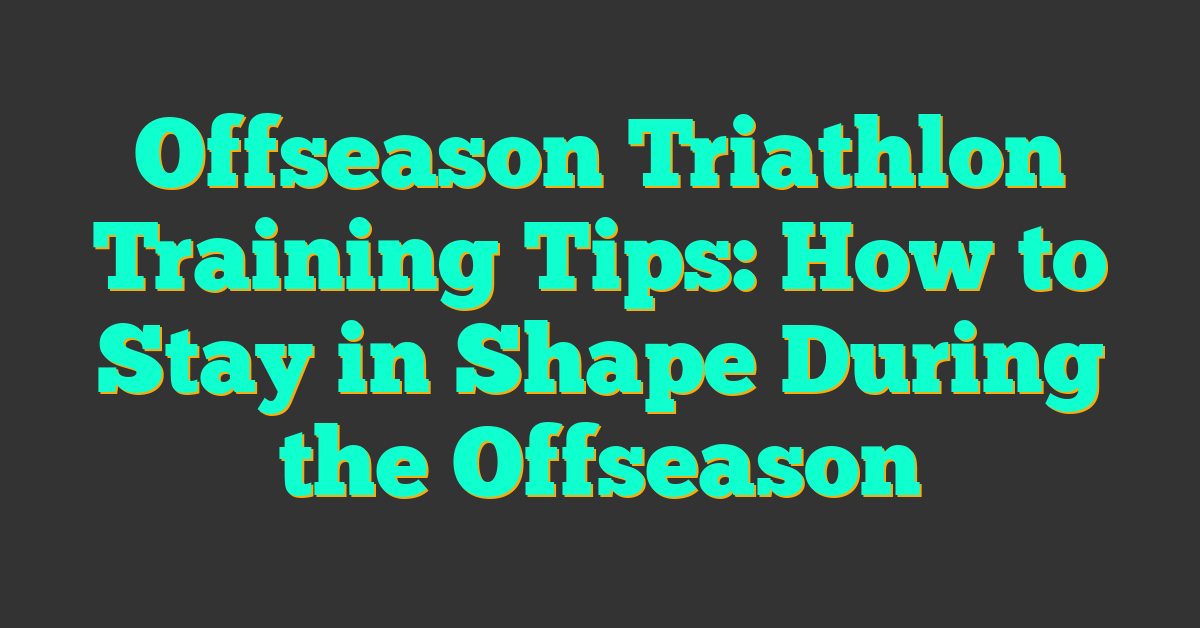Winter does not have to put my triathlon goals on ice. I love the crisp air the quiet roads and the sense that I am doing something bold while most folks stay inside. If you are curious about your first triathlon this season might be your secret advantage.

Many beginner friendly events pop up with pool based swims short bike loops and safe run routes. I get clear course support and a relaxed vibe so nerves stay low and fun stays high. Training feels doable when I break it into small wins each week.
I will share how I pick the right race what gear keeps me warm and how I plan for chilly starts. Let’s make that first finish line happen this winter.
Triathlon Events For Beginners In Winter: Top Picks
I target easy entries that keep winter triathlon fun. I favor formats that cap risk and boost learning.
Indoor Triathlon Series At Fitness Clubs
- Choose time-based formats that score distance covered in set blocks like 10 min swim, 30 min bike, 20 min run for low pressure racing, per USA Triathlon Indoor guidelines. Source: https://www.usatriathlon.org/race/indoor-triathlon
- Confirm pool lanes, studio bikes, and treadmills for predictable logistics, then plan steady pacing across each segment.
- Expect controlled temps and no weather delays, then bring a small towel and clear bottle for fast transitions.
- Ask staff about lap counting, wave starts, and scoring, then practice quick setup in a compact transition space.
- Target local club series examples like Lifetime Indoor or Y tri days for consistent formats and frequent dates. Source: https://www.lifetime.life and https://www.ymca.net
Pool-Based Super Sprint Triathlons
- Pick short distances like 250–400 m pool swim, 8–12 km bike, 2–3 km run for a forgiving start, per USA Triathlon and British Triathlon event norms. Sources: https://www.usatriathlon.org and https://www.britishtriathlon.org
- Favor snake swims with lane merges and seeded starts for calm water, then seed conservatively if uncertain.
- Verify indoor check-in, pool deck staging, and numbered heats, then bring flip-flops and a small towel for deck safety.
- Prioritize flat bike loops and traffic control for beginner comfort, then preview corners and mount line.
- Use winter-friendly venues at schools, community centers, and leisure complexes for reliable scheduling. Source: https://www.worldtriathlon.org/events
Warm-Weather Destination Sprint Triathlons
- Search national and international calendars for winter sprints in mild climates like Florida, Arizona, and Canary Islands examples, then sort by late fall through early spring dates. Sources: https://www.usatriathlon.org/events and https://www.worldtriathlon.org/events
- Check climate normals like 60–75°F air and 64–70°F water for places like Miami, Phoenix, and Tenerife to simplify kit choices. Sources: https://www.ncei.noaa.gov and https://www.aemet.es
- Book courses with ocean or sheltered lake swims and closed road bikes, then confirm wetsuit rules and wave layouts in the athlete guide.
- Plan travel buffers of 24–48 hours before race day for acclimation, then schedule a short shakeout in each sport.
- Compare elevation, wind, and water chop on past race reports and maps, then select routes that match beginner confidence.
Snow Triathlons And Winter Multisport Hybrids
- Explore snow triathlon formats with run, MTB on snow, and run across compact loops, per World Triathlon rules. Source: https://www.worldtriathlon.org/disciplines/snow-triathlon
- Target beginner distances with 2–4 km run segments and 5–10 km bike segments at local events, then practice traction on groomed snow.
- Rent or prep front-studded tires and low pressures for grip, then test braking and cornering on packed tracks.
- Layer with breathable shells, thermal gloves, and trail shoes with microspikes examples for safety, then adjust after a short warmup.
- Consider hybrids like duathlon on snow or run-ski-run where Nordic replaces the bike for smoother skill uptake. Source: https://www.worldtriathlon.org
| Event type | Swim format | Bike format | Run format | Typical distances | Typical temps |
|---|---|---|---|---|---|
| Indoor tri series | Pool time trial by minutes | Studio bike by minutes | Treadmill by minutes | 10–15 min swim, 20–30 min bike, 15–20 min run | 68–72°F indoor |
| Pool super sprint | Pool lanes snake or waves | Short road loops | Short path loops | 250–400 m, 8–12 km, 2–3 km | 35–55°F air, 78–82°F pool |
| Warm-weather sprint | Open water waves | Closed or semi-closed roads | Park or waterfront paths | 750 m, 20 km, 5 km | 60–75°F air, 64–70°F water |
| Snow triathlon | Run on groomed snow | MTB on groomed snow | Run on groomed snow | 2–4 km run, 5–10 km bike, 2–4 km run | 15–32°F air |
How We Evaluated The Events
I use a clear scoring model for winter triathlon events for beginners. I apply it across formats and regions.
Beginner-Focused Course Design And Support
I target course features that reduce cognitive load for first timers.
- Prioritize short formats like super sprint and indoor time based sets, for example 250 to 400 yd pool swim, 6 to 10 mi bike, 1.5 to 3.1 mi run
- Verify swim environment with lanes, walls, deck exits, and at least 1 certified lifeguard per 25 swimmers, per American Red Cross guidance (American Red Cross, 2023)
- Count course loops that stay inside parks or closed roads, for example 2 to 3 bike loops under 3 mi each, and 1 to 2 run loops under 1.5 mi each
- Confirm visible wayfinding with cones, flags, and mile boards every 0.5 to 1.0 mi
- Check volunteer density at turns and transitions, for example 1 volunteer per turn and 1 volunteer per 20 bikes in T1 and T2
- Request pre race clinics, course briefings, and paced groups for beginners, for example 10 to 12 min per mi run groups
- Review cutoffs that fit new athletes, for example 90 to 120 min total time for super sprint formats
Weather Resilience And Safety Measures
I rate events on plans that keep athletes safe in winter.
- Require indoor or pool swims below 55 F air temps, per USA Triathlon sanctioning best practice for athlete safety in cold conditions (USA Triathlon Event Organizer Resources, 2024)
- Check wind chill planning using NWS charts and update windows at T minus 72, 24, 3 hours, with reroute triggers at wind chill under 10 F for bike segments (National Weather Service, 2024)
- Confirm surface treatment on bike turns and bridges, for example brine pre treatment and grit application within 12 hours of start
- Verify medical coverage, for example 1 EMT unit per 250 athletes, 1 roving bike medic, and hypothermia warming kits in T1 and finish, aligned with USAT sanctioning standards (USA Triathlon Sanctioning Guide, 2024)
- Ensure mandatory gear rules when temps drop, for example thermal gloves, toe covers, and a windproof layer, backed by on site gear checks
- Validate contingency plans, for example bike to run duathlon swap or time based indoor conversion when black ice risk exists
- Audit communication channels, for example SMS alerts, PA updates, and course marshals with radios at 1 mi spacing
- Cross check water temp policy for open water formats, for example full suit at 65 F and below, no swim below 50 F, per World Triathlon guidance on cold water competition (World Triathlon, 2023)
Registration, Cost, And Travel Practicalities
I balance access, price, and logistics for beginners in winter.
- Compare entry fees across formats, for example $35 to $60 indoor, $50 to $90 super sprint, $80 to $140 sprint, based on Active network listings and USAT reports (Active, 2023, USA Triathlon Annual Report, 2023)
- Factor USAT membership paths, for example $15 one day for sprint, $60 annual adult, with youth discounts where offered (USA Triathlon, 2024)
- Track refund or deferral policies with weather clauses, for example 70 percent credit for weather conversion to indoor, or deferral to spring series
- Map venue proximity to airports and transit, for example under 45 min drive from major airports, and on site parking within 0.5 mi of transition
- Assess seasonal travel risk using historical delay rates, for example 15 to 25 percent delay rates at northern hubs in January, per BTS on time stats (U.S. DOT BTS, 2024)
- Estimate gear baggage footprint, for example 1 bike case at 50 lb, 1 duffel at 35 lb, and rental options at local shops when road conditions favor wider tires
- Review host hotel block terms with late checkout, for example 1 pm checkout for post race recovery, and gear rinse areas
| Criterion | Weight percent | Key sources |
|---|---|---|
| Beginner course design | 40 | USA Triathlon, American Red Cross |
| Weather and safety | 40 | USA Triathlon, World Triathlon, NWS |
| Cost and travel | 20 | USAT, Active, U.S. DOT BTS |
- USA Triathlon Event Organizer Resources, Sanctioning Guide, Membership, 2023 to 2024
- World Triathlon Competition Rules Cold Water Addendum, 2023
- American Red Cross Lifeguarding Manual, 2023
- National Weather Service Wind Chill Chart, 2024
- Active Endurance Event Fee Data, 2023
- U.S. DOT Bureau of Transportation Statistics On Time Performance, 2024
Side-By-Side Comparison: Which Option Fits You
I match event types to beginner priorities using distance, temperature, and cost. I keep choices practical for winter so confidence stays high.
| Option | Swim type | Typical distances | Temp range | Entry fee | Logistics | Example events |
|---|---|---|---|---|---|---|
| Indoor tri series | Pool or rower estimate | 10–20 min swim, 20–30 min bike, 15–20 min run | 60–72°F indoors | $30–$70 | Local gyms, timed heats | Life Time Indoor Tri, YMCA series |
| Pool super sprint | 250–400 yd pool, serpentine | 250–400 yd swim, 6–12 mi bike, 1.5–3.1 mi run | 35–55°F outdoors | $50–$120 | Short bike loops, onsite timing | Early Bird Pool Tri, Frostbite Super Sprint |
| Warm destination sprint | Open water or protected bay | 0.25–0.5 mi swim, 10–15 mi bike, 3.1 mi run | 60–80°F air, 62–75°F water | $90–$180 | Fly or drive, rental bike optional | HITS Naples, Scottsdale Sprint |
| Snow tri or winter hybrid | Run or ski start, no swim | 3–5 km run, 5–10 km bike fat-tire, 3–5 km ski | 10–32°F snow | $40–$120 | Fat-bike or rentals, wax station | ITU Winter Tri, Powder Tri local |
Sources: USA Triathlon event guidelines and safety (USA Triathlon), World Triathlon winter triathlon format (World Triathlon), CDC cold exposure and layering basics (CDC).
Best For First-Timers Nervous About Open Water
- Pick indoor tri series at fitness clubs since pool formats cut anxiety about sighting and chop (USA Triathlon).
- Pick pool super sprints with 250–400 yd serpentine lanes since lane lines and shallow decks add control.
- Pick events with timed heats and smaller waves since predictable starts reduce crowding.
- Pick courses with closed bike loops of 1–3 mi since marshals and barriers raise safety.
- Pick races that provide on-deck warm showers and indoor staging since cold exits challenge beginners.
- Pick coaches or clinics offered by the host since familiar faces boost confidence.
Best For Budget-Conscious Local Racers
- Choose indoor tri series within 15–30 minutes of home since travel costs vanish.
- Choose pool super sprints that include a cotton tee and chip timing since value matters.
- Choose events with gear rental like trainers and timing chips included since outlay shrinks.
- Choose races that cap fields at 150–400 since logistics stay smooth for check-in.
- Choose off-peak dates in January or February since fees trend lower than spring spikes.
- Choose volunteer opportunities for future credits since some organizers offer entry discounts.
Best For Adventure Seekers Comfortable With Cold
- Select snow tri or winter hybrids that swap swims for run bike ski since novelty drives fun (World Triathlon).
- Select venues with packed snow and fat-bike access since traction defines control.
- Select gear plans with 2–3 thin layers and windproof shells since moisture management prevents chill (CDC).
- Select events with hot tents and gear drops since warm transitions speed changes.
- Select locations at 3,000–7,000 ft altitude with stable winter temps since consistency beats slush.
- Select races that post cold-weather contingencies like duathlon switches since resilience keeps the day on track.
Training And Gear Tips For Winter First-Timers
I coach beginners through cold race days and indoor formats across winter. I keep comfort high and decision fatigue low with simple systems.
Essential Cold-Weather And Indoor Gear
- Layer smart with a wicking base, a thermal mid, a windproof shell. I pick merino or synthetic blends for base layers in 150–200 gsm.
- Protect extremities with thermal gloves, toe covers, a fleece beanie. I add a thin swim cap under the race cap if a pool deck feels cold.
- Choose traction that matches surface. I run in winter rubber compounds, add microspikes on packed snow, skip studs on polished indoor floors.
- Mount wider tires for grip. I ride 28–32 mm tires at 70–85 psi on wet roads, use 35–40 mm studded tires on ice.
- Swap to clear or yellow lenses for low light. I keep photochromic eyewear on dawn starts.
- Carry body heat aids. I stash chemical hand warmers in bike shoes and gloves, add a small towel in T1.
- Use a smart trainer or spin bike for indoor prep. I target ERG intervals for precision.
- Pack tri kit layers you can don fast. I stage a sleeveless tri suit, arm warmers, a thin vest, a headband.
| Item | Temp or Use | Notes |
|---|---|---|
| Base layer | 32–45°F outdoor | Merino 150–200 gsm |
| Bike shell | 20–45°F outdoor | Windproof front panel |
| Gloves | 20–40°F outdoor | 2 pairs for backup |
| Toe covers | 25–45°F outdoor | Neoprene 2–3 mm |
| Tires | Wet road | 28–32 mm, 70–85 psi |
| Studded tires | Ice and packed snow | 35–40 mm, 100–200 studs |
| Swim cap double | Cold deck | Silicone over latex |
| Smart trainer | Indoor | ERG workouts |
| Hand warmers | Start line and T1 | 6–8 hr packets |
References: USA Triathlon Cold Weather Tips, World Triathlon cold water guidance, ACSM exercise in the cold position stand.
Simple 8–10 Week Prep Plan Overview
I build an 8–10 week base with frequent touch points and low strain. I anchor progress to consistency, then add intensity.
| Week | Swim | Bike | Run | Strength | Key Focus |
|---|---|---|---|---|---|
| 1 | 2x 20–30 min | 2x 30–40 min | 2x 20–30 min | 2x 15–20 min | Easy aerobic, technique |
| 2 | 2x 25–35 min | 2x 35–45 min | 2x 20–30 min | 2x 15–20 min | Cadence drills, strides |
| 3 | 2x 30–40 min | 3x 30–45 min | 2x 25–35 min | 2x 20 min | Intro tempo, hills |
| 4 | 2x 30–40 min | 3x 35–50 min | 3x 25–35 min | 2x 20 min | Brick 20 min bike plus 10 min run |
| 5 | 2x 35–45 min | 3x 40–55 min | 3x 25–40 min | 2x 20–25 min | Threshold set 2×8 min |
| 6 | 2x 35–45 min | 3x 45–60 min | 3x 30–40 min | 2x 20–25 min | Brick 30 plus 15, transitions |
| 7 | 2x 35–50 min | 3x 45–60 min | 3x 30–45 min | 2x 20–25 min | Race pace reps 4×5 min |
| 8 | 2x 30–40 min | 2x 35–50 min | 2x 25–35 min | 2x 15–20 min | Taper 15–20 percent |
| 9–10 | 2x 25–35 min | 2x 30–45 min | 2x 20–30 min | 1–2x 15–20 min | Event week taper and sharpen |
- Anchor frequency before volume. I hit 2–3 sessions per sport each week, then nudge duration by 10–15 percent if energy stays stable.
- Insert bricks for specificity. I start at 15 min bike plus 10 min run, then grow to 40 plus 20 by week 7.
- Mix intensities for resilience. I keep 70–80 percent easy, add 1 short threshold set per sport weekly, hold indoor control on a smart trainer.
- Include mobility and strength. I train hips, calves, posterior chain with squats, deadlifts, step downs, band walks.
- Track readiness daily. I monitor sleep, HRV, resting HR, perceived exertion, then trim load if markers drift. Sources: ACSM training load guidance, IOC consensus on load and injury risk.
Transition And Warm-Up Strategies
- Stage layers in order. I place race belt, vest, gloves, headband on top, then shoes left to right.
- Dry fast after the swim. I towel torso and feet, I pull on the vest and gloves, I step into bike shoes.
- Prime heat indoors. I jog 5–8 min on a treadmill or hallway, I spin 5–10 min on a trainer, I finish with 4×20 s builds.
- Activate key movers. I run leg swings, band walks, ankle rocks, calf raises, then 5 deep squats.
- Protect lungs in cold air. I cover mouth and nose with a buff, I start easy for 5–10 min. Source: American Thoracic Society cold air and exercise induced bronchoconstriction.
- Simplify choices. I pick one glove option, one vest option, one eyewear lens, then stick to the plan on race day.
- Mark landmarks for flow. I note rack row, mount line, dismount line, bathroom, warm room. Source: USA Triathlon competitive rules.
Planning And Booking Smart
I plan and book smart for winter triathlon events to cut cost and stress. I match registration tiers and travel windows to beginner friendly race formats.
Timing Your Registration And Travel
Timing your registration and travel decides cost and confidence for beginners in winter. I lock race entries early and I keep travel flexible for storms.
- Book early-bird tiers for pool or indoor triathlon events first. Many races raise prices in 2 to 3 tiers with 10% to 30% jumps near late registration based on past Active network listings and Triathlete reports (Active, https://www.active.com and Triathlete, https://www.triathlete.com)
- Pick races with deferral or transfer policies. USAT sanctioned events list policy details in registration notes and athlete guides (USA Triathlon, https://www.usatriathlon.org)
- Reserve flights 30 to 60 days out for domestic winter race travel. Average lowest fares often appear in that window based on airfare trackers like Hopper and Google Flights trends for 2023 to 2024 (Hopper, https://www.hopper.com and Google Flights, https://www.google.com/travel/flights)
- Hold hotel rooms with free cancellation. Many properties offer 24 to 72 hour cancellation windows on standard flexible rates on major platforms like Booking and Expedia
- Arrive 1 to 2 days early for snow or storm prone regions. I add a buffer if the course includes outdoor bike segments or mountain passes
- Pack carry on race gear for winter delays. I keep shoes, trisuit, goggles, and nutrition in the cabin
| Item | Typical window or value | Source |
|---|---|---|
| Early bird registration | 90 to 180 days before race | Active, Triathlete |
| Price increase per tier | 10% to 30% per tier | Active, Triathlete |
| Domestic flight purchase | 30 to 60 days before departure | Hopper, Google Flights |
| Hotel free cancel window | 24 to 72 hours before check in | Booking, Expedia |
| Arrival buffer for winter races | 1 to 2 days before race day | Coach practice standard |
What To Ask Race Organizers Before You Commit
Asking race organizers the right questions locks clarity for triathlon events for beginners in winter. I verify safety plans and comfort details before I pay.
- Confirm swim environment and temperature control. Ask about indoor pool temps at 78 to 82 F and lap format examples like serpentine or time trial
- Confirm weather contingency plans. Ask about indoor swim plus shortened bike loops or duathlon swaps if ice forms
- Confirm cutoffs and wave starts for beginners. Ask for super sprint examples with 45 to 60 minute bike plus run combined cutoffs and ability based starts
- Confirm course surface prep. Ask about plowing sanding salting and traction rules for bikes and run shoes with examples like file tread or microspikes
- Confirm transition heating and shelter. Ask about indoor T1 and T2 access or heated tents with space for 1 small bin per athlete
- Confirm aid station offerings. Ask for warm fluids examples like tea broth or sports drink at 20 to 40 minute intervals
- Confirm medical coverage and on course patrols. Ask about EMT teams bike marshals and snow safety if trails cross ski routes
- Confirm packet pickup options. Ask for race morning pickup and ID rules to avoid extra nights if travel slips
- Confirm deferral refund and transfer terms. Ask about timelines fees and one time exceptions for weather cancellations under USAT sanction guidance
- Confirm equipment rental or loaner options. Ask about wetsuits spin bikes trainers and run spikes for first timers
| Topic | Key number or rule | Source |
|---|---|---|
| Wetsuit status pool or open water | Wetsuit legal up to 78 F and allowed 78 to 83 F with ineligibility for awards | USA Triathlon Competitive Rules 4.4, https://www.usatriathlon.org |
| Typical super sprint cutoffs | 45 to 90 minutes total with segment limits posted in athlete guide | Race guides, USAT sanction pages |
| Pool temperature standard | 78 to 82 F for lap swim comfort | USA Swimming facilities guidance, https://www.usaswimming.org |
| Aid station spacing cold events | 1 every 1 to 2 miles run and 1 per bike loop | Race guides for indoor and winter hybrids |
I ask for sample athlete guides from last year if the new guide is pending. I keep emails and links in one folder for quick race week checks.
Conclusion
Winter can be a brave season to start and that makes your first finish feel even sweeter. Pick one event this week and put it on your calendar. Tell a friend so the plan sticks. Do one short practice with full kit and treat it like a fun test run.
Trust simple habits. Warm up well. Stay patient on race day. Smile at the volunteers. Let the quiet winter air sharpen your focus. You do not need perfect conditions to begin. You just need one clear step.
« Triathlon Events in the U.S.: Ultimate Guide to Races, Top Picks, and Planning Tips
How to Find Last-Minute Triathlon Races Near You: Fast Strategies, Apps, Pro Tips »
If you want a nudge share your target date with me. I’m cheering for you. I’ll see you at the start line and I hope at the finish line too.










